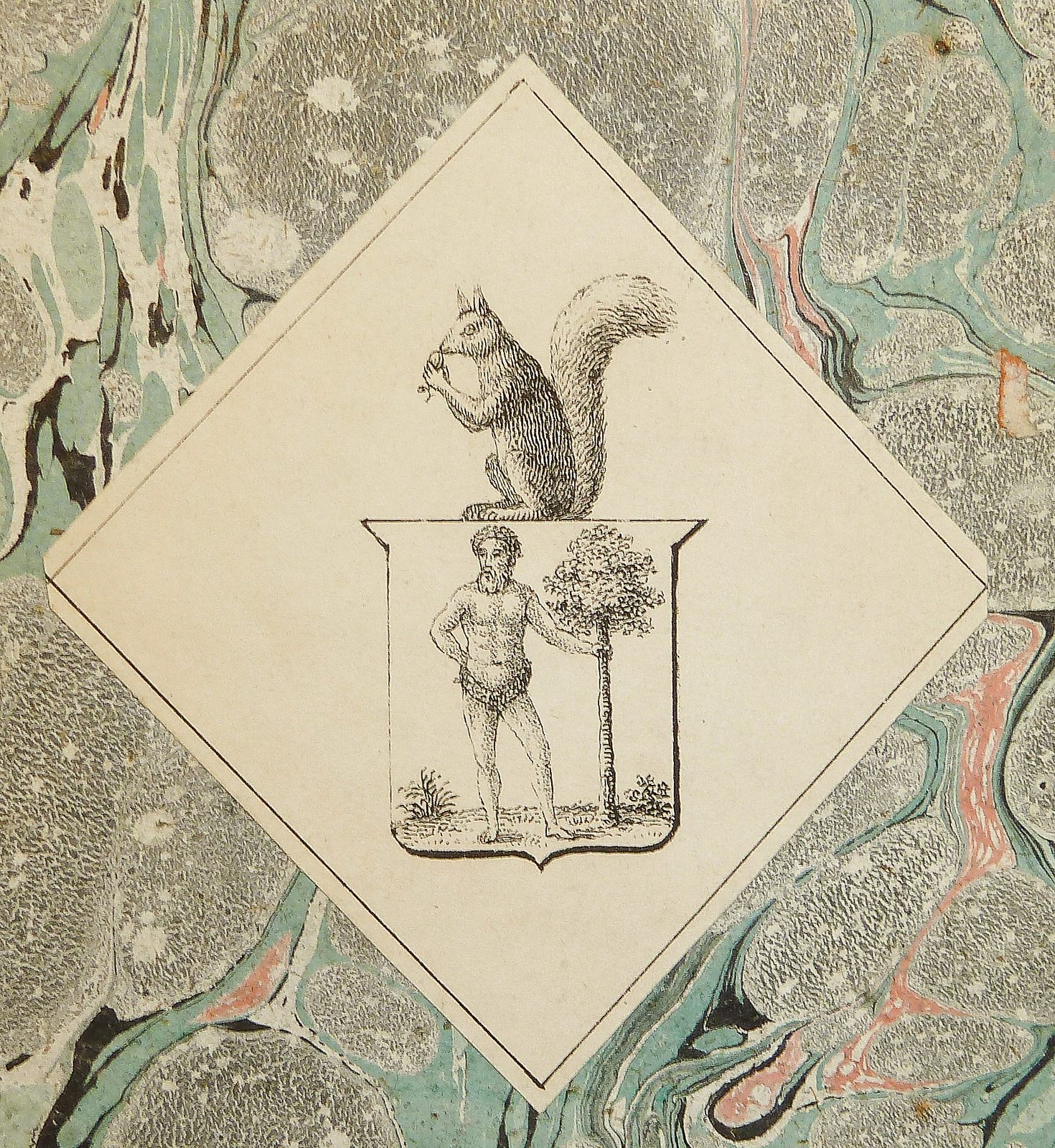Bookplates Hold the Secrets to Books’ Past Lives
The mysterious marks owners leave in their books tell stories of their own.

Inside the front cover of a book made in the 16th century, someone has pasted a mysterious, black-and-white bookplate. At the top, Greek letters spell out a cryptic identity—“Philos Pontou,” or “Friend of the Sea.” Underneath, the bookplate depicts a noble white unicorn dashing through the water, its horn pointing down into a cresting wave.
In one corner is a year—1917—and the name of the engraver, Joe Andrada. There were no other clues, though, about who actually owned the book.
This particular volume has a long history, and it shows. An edition of St. John Chrysostum’s fourth-century work on the priesthood, the book was published in 1599, by Michael Manger, the “single printer worth mentioning” in 16th-century Augsburg, Germany. It was bound in a deep red Morocco leather, with a border of gold and a crest stamped in the center, the arms of Jacques-Auguste de Thou and his first wife, Marie de Barbançon. Later, another owner, François-Michel de Verthamon, Marquis de Breau, added his own heraldic bookplate inside the back cover. And on the back of the title leaf, there’s an inscription, noting that Félicien Estignard gifted the book to Abbé Pistre, former Curé of Conne, in December 1861.
But some time after that, the book must have passed into the hands of this Philos Pontou, whoever that person might be. In theory, a bookplate should identify its owner. But in this case, by the time the book had entered the collection of the University of Pennsylvania, the identity of this cryptic “Friend of the Sea” had become obscure.

As long as there have been books, their owners have been finding ways to leave marks on them. In a personal collection, these notes might evoke a particular memory: the college semester dedicated to finally reading James Joyce’s Ulysses or the name of the boy who gave the book as a gift. But for librarians and curators, those assertions of owners’ identities—provenance marks, they’re called—are clues to a book’s history.
“They help you understand how these books were used and who was reading them,” says Laura Aydelotte, the director of the Provenance Online Project at the University of Pennsylvania’s Kislak Center for Special Collections, Rare Books and Manuscripts. Since 2011, the project has collected more than 15,000 images of provenance marks in books from the university’s own collection, as well as from a handful of partner libraries.
The project focuses on “primary provenance,” that is “anything that’s in or on the book itself that tells you who owned the book before,” says Aydelotte. (Secondary provenance material would be, for example, a receipt or auction record that records the transfer of the book from one owner to the next.) These marks can be bookplates, marginalia, bindings, or even more obscure details, such as the particular way an owner once dog-eared the pages.

Over the history of printing, these provenance marks have evolved. In medieval times, some libraries marked the edges of a book’s pages, and illuminated manuscripts might include a portrait of the book’s owner. In the past, a book’s owner might use a formulation such as “Lucinda, her book” to assert ownership, rather than the more modern “This book belongs to … ” Coats of arms used to be a popular way of marking books. Bookplates appeared with the age of print, stamps later on. There are painstaking and creative provenance marks, such as embroidered bindings, but the most basic assertion of ownership—writing one’s name—has been a constant.
The cataloguing staff at UPenn’s special collections started posting images of provenance information online in part to help solve the many mysteries they came across. They were also curious to know more about previous owners. When the project posted an inscription from “Celestino Joaristi, Havana, Cuba,” his descendants found the image and filled in the details of his life: A student at UPenn in the 1930s, he left school suddenly to take over the family hardware business in Cuba after his father died. Another bookplate prompted an old friend to comment that he had known the book’s owner in Algeria during World War II. But many of the bookplates and notes remain mysterious. Who is represented by this bookplate featuring a squirrel and a strongman? Who was Anastasia Löwin?

Philos Pontou was eventually identified, with the help of the Ritman Library, which specializes in texts about ancient mysticism and had other examples of the bookplate in its collection. Philos Pontou, according to the Ritman, is a pun on the name of René Philipon, a French count who lived until 1936. His library was sold three years after this death, but he had left behind his mysterious mark, a puzzle for future collectors.




























Follow us on Twitter to get the latest on the world's hidden wonders.
Like us on Facebook to get the latest on the world's hidden wonders.
Follow us on Twitter Like us on Facebook